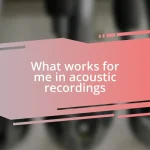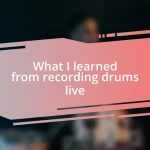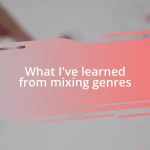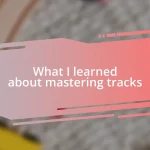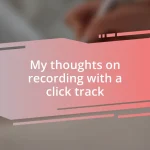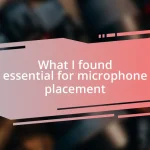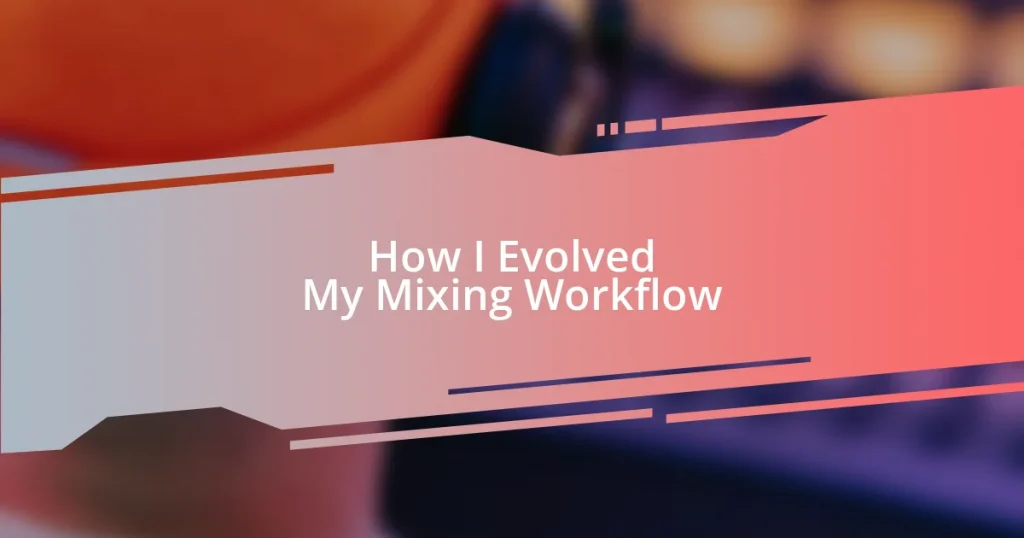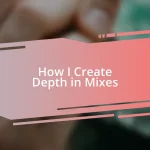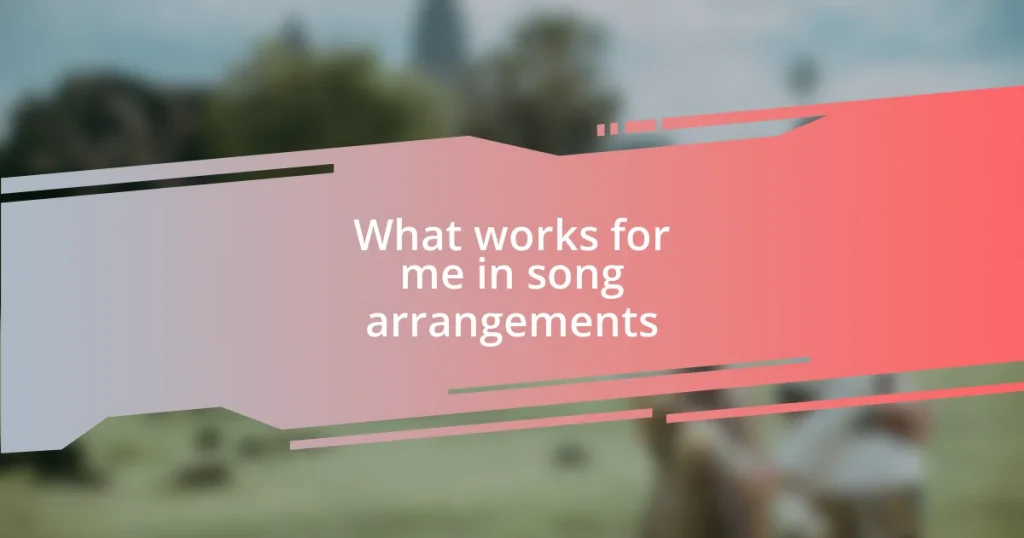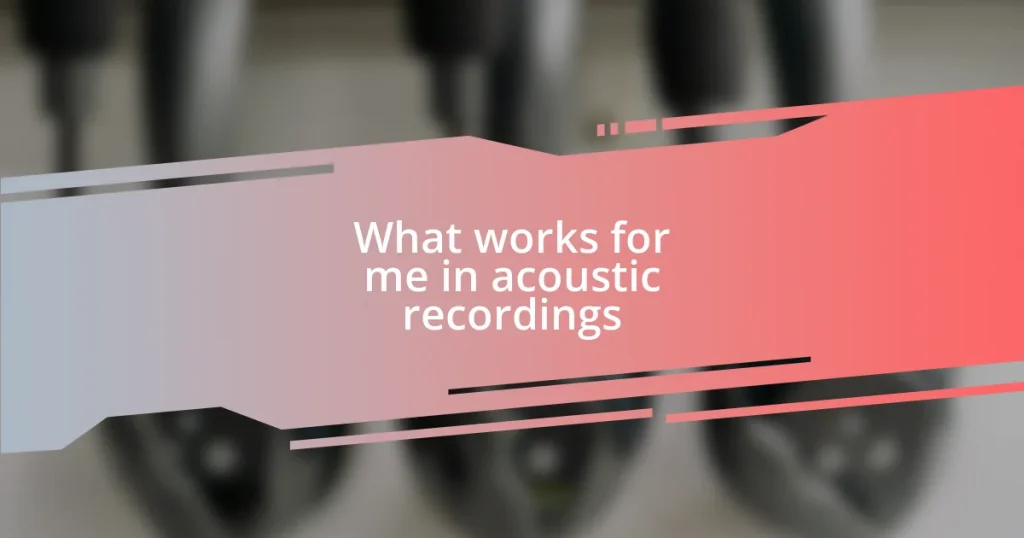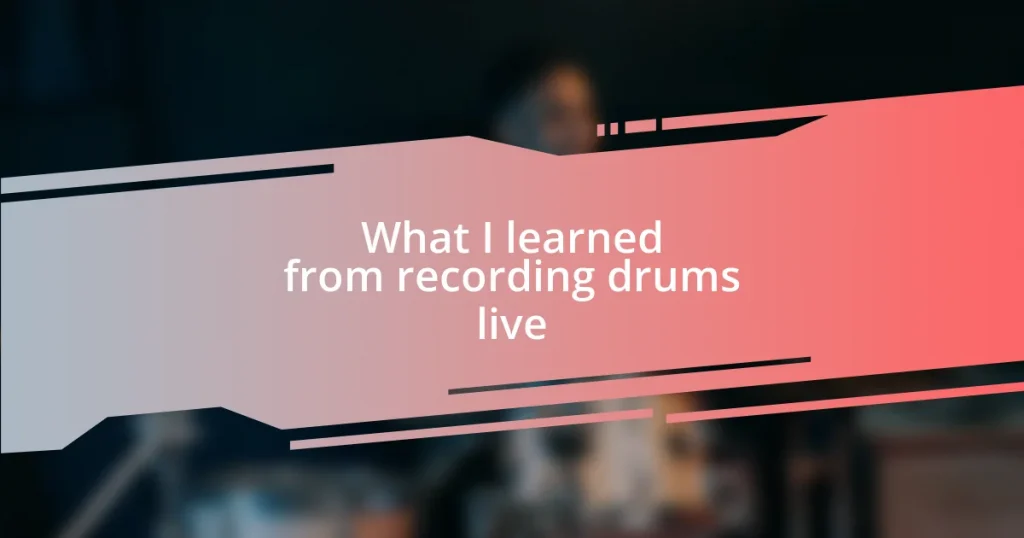Key takeaways:
- Identified key improvement areas including listening skills, plugin management, and the importance of feedback, leading to a more streamlined mixing process.
- Implemented research-based strategies, such as dynamic EQ and mix bus processing, which significantly enhanced the quality and creativity of mixes.
- Established a structured workflow and embraced feedback for growth, resulting in greater clarity and direction in mixing sessions while fostering personal evolution as a mixer.
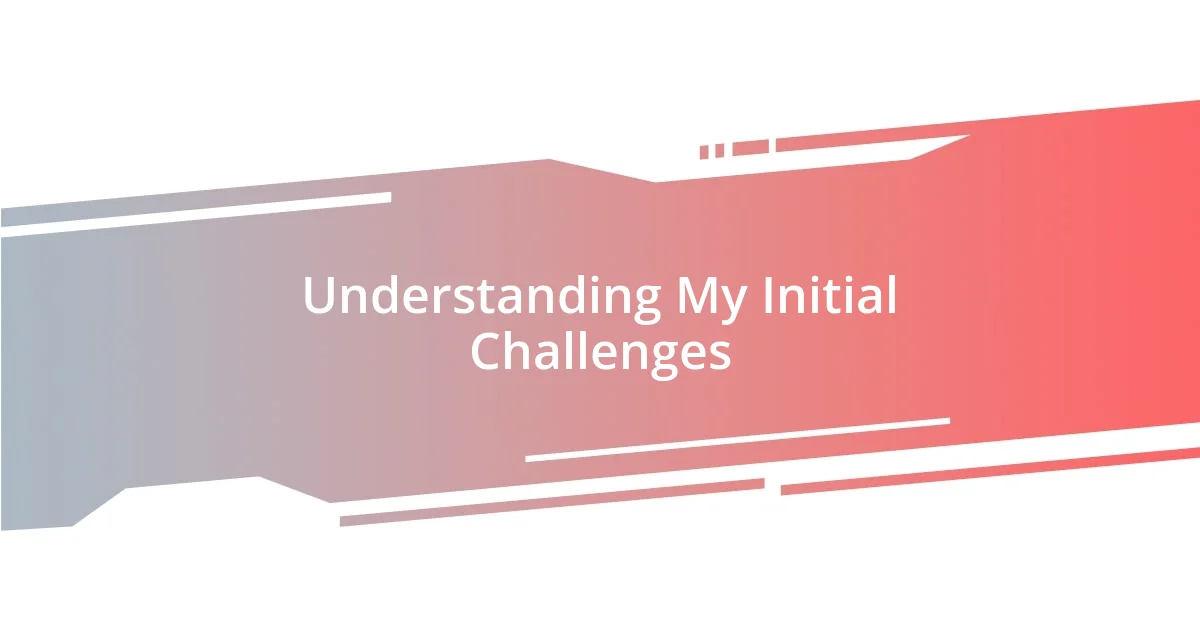
Understanding My Initial Challenges
When I first started mixing, I quickly realized how overwhelming it could be. I often found myself drowning in options, staring at countless plugins and EQ settings, feeling paralyzed. Did I really need so many tools? It felt like I was trying to navigate a labyrinth without a map.
One challenge that stood out was my inability to truly hear the elements in my mixes. I recall countless late-night sessions where I was convinced everything sounded good, only to wake up the next day and feel embarrassed at what I had created. Why didn’t it sound as lush and polished as I imagined it? This harsh reality forced me to confront some uncomfortable truths about my listening skills and the mix decisions I was making.
As I reflected on my journey, I became aware of my tendency to overcomplicate things. I remember one track, in particular, where I inserted effect after effect, hoping to mask my inexperience. Instead, it only muddied the sound. It made me wonder—was I trying to be creative or just avoiding a lack of confidence? This experience pushed me to simplify my approach and focus on the fundamentals of mixing.
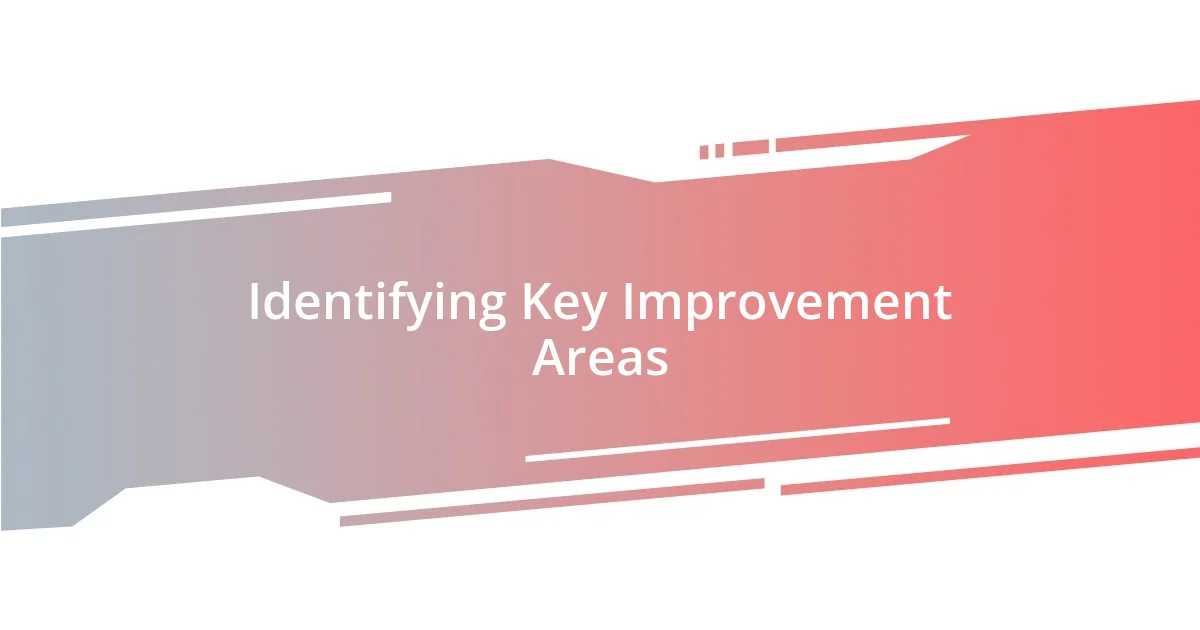
Identifying Key Improvement Areas
Identifying key improvement areas in my mixing workflow felt like peeling back layers of an onion. Each layer revealed not just technical flaws, but also mental blocks I had built over time. I had to confront the truth that I was often mixing in isolation, not seeking feedback from others, which limited my growth. It was like trying to solve a complex puzzle without ever checking the box for a picture reference—frustrating and inefficient!
Here are some specific areas I identified for improvement:
- Listening Skills: I recognized the need to train my ears actively instead of passively. I started dedicating time to critical listening exercises, comparing my mixes to professional tracks.
- Plugin Management: I realized I was overwhelmed by my plugin library. I began curating my go-to plugins, which made decisions quicker and mixing less daunting.
- Feedback Loops: Seeking constructive criticism from fellow musicians and engineers became essential. I remember that first time someone pointed out an imbalance in my mix; it felt uncomfortable, but it opened my eyes to new perspectives.
- Workflow Simplification: Each mix I approached with a checklist mentality helped streamline my process, cutting down on unnecessary layers and effects.
- Reference Tracks: Using reference tracks became a game changer. Having a clear goal in sound quality shifted my mixing focus dramatically.
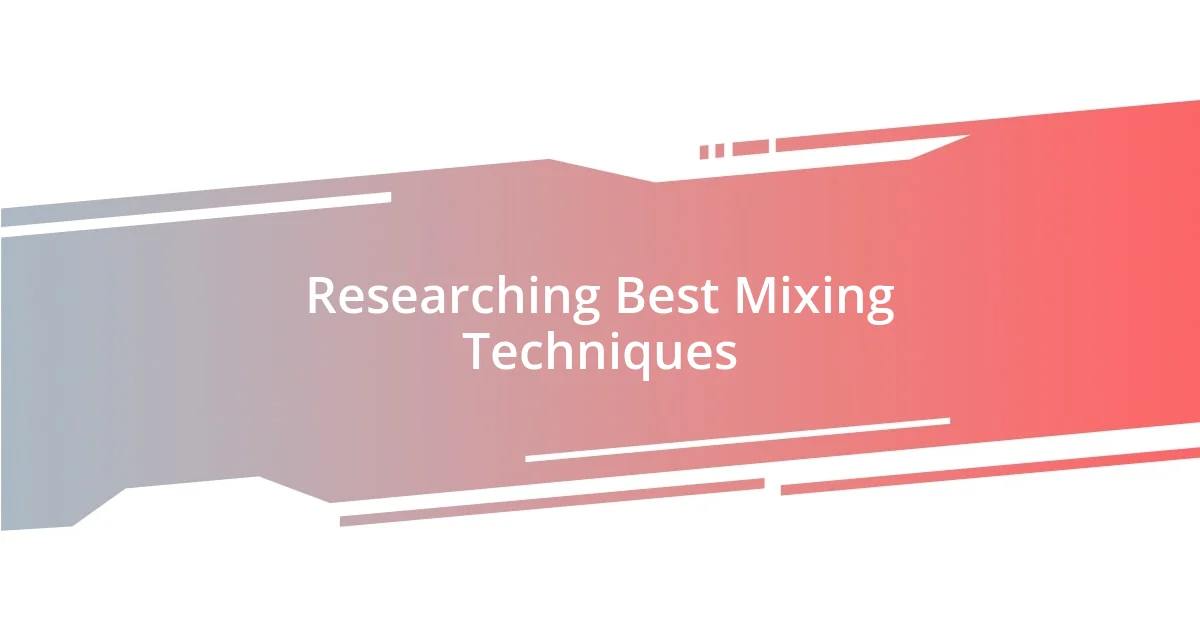
Researching Best Mixing Techniques
Researching effective mixing techniques was a game changer for me. At first, I felt lost, as if I were wandering in a dark alley without a flashlight. I remember diving deep into various online resources, watching countless tutorials, and even participating in community forums. It was fascinating to see how different producers approached their mixes differently. One technique that resonated with me was the use of dynamic EQ. I realized that adjusting frequencies dynamically, rather than statically, allowed for a more nuanced sound that captured the energy of the track, which was something I desperately needed.
As I explored various mixing philosophies, I began to adopt strategies from the greats. I stumbled upon the concept of using a “mix bus,” which completely transformed my workflow. The idea of processing all my tracks through a bus before the final mixdown felt liberating. I could shape the overall sound without affecting the individual elements too dramatically. Adopting this technique reminded me of a chef who seasons a dish just right, enhancing the flavors without overwhelming them.
In my research, I also came across the importance of using contrasting techniques. For example, blending analog warmth with digital clarity became my new mantra. I was amazed at how tweaking certain elements could elevate a mix from plain to extraordinary. It was as if adding a secret ingredient that made everything pop. Each discovery on this journey helped me build a toolkit of techniques I could draw upon, ultimately shaping my own unique mixing style.
| Technique | Description |
|---|---|
| Dynamic EQ | Adjusts frequencies dynamically for a more responsive sound. |
| Mix Bus Processing | Processes all tracks collectively for cohesive sound. |
| Analog vs. Digital | Combines warmth of analog with clarity of digital techniques. |
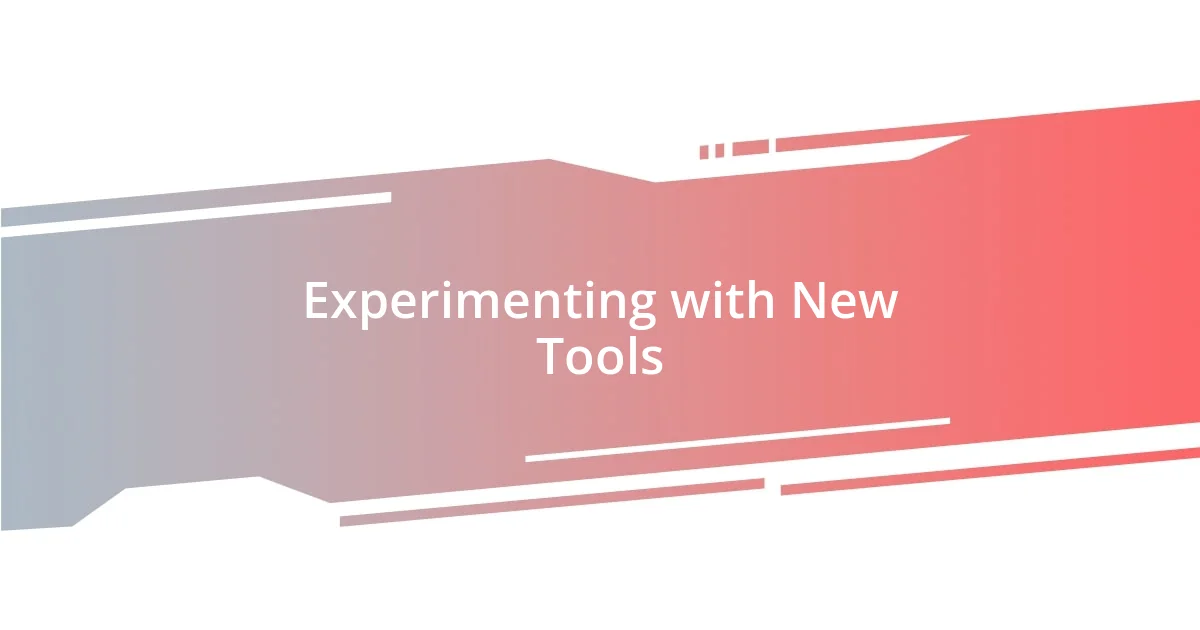
Experimenting with New Tools
Experimenting with new tools in my mixing workflow has always been an exciting journey. I vividly recall the day I decided to explore an unusual plugin that promised to add warmth and depth—a vintage emulation. Initially, I hesitated. Would it really make a difference? But once I applied it to a track, the sound transformed before my ears. It was like wrapping my mix in a soft blanket, adding character in a way I hadn’t anticipated. The excitement that came from hearing those subtle enhancements reinforced my belief that every tool has potential waiting to be unlocked.
As I ventured further into the world of plugins, I discovered the power of parallel processing, a technique I had previously overlooked. One evening, I mixed a vocal track while experimenting with this approach. I sent the vocals to two different tracks—one with heavy compression and the other untouched. The blend created a punchy, yet airy sound that brought the emotion of the performance to life. I couldn’t help but smile, realizing that sometimes, stepping away from traditional methods can lead to groundbreaking results. Have you ever found yourself pleasantly surprised by a tool you initially dismissed?
The thrill of discovering new tools doesn’t just lie in their application, but also in how they can reinvigorate your creative flow. I remember a particularly challenging mix where I felt stuck in a rut. Frustration was creeping in, and I needed a spark. On a whim, I downloaded a free synth plugin. As I played with its presets, ideas surfaced that I never saw coming. What if I added a synth pad under the chorus? That simple experimentation lifted the whole track. Ultimately, I learned that the right tool, whether it’s a plugin or an unconventional sound, can lead to moments of inspiration that elevate your work in ways you might never expect. Have you had a similar experience?
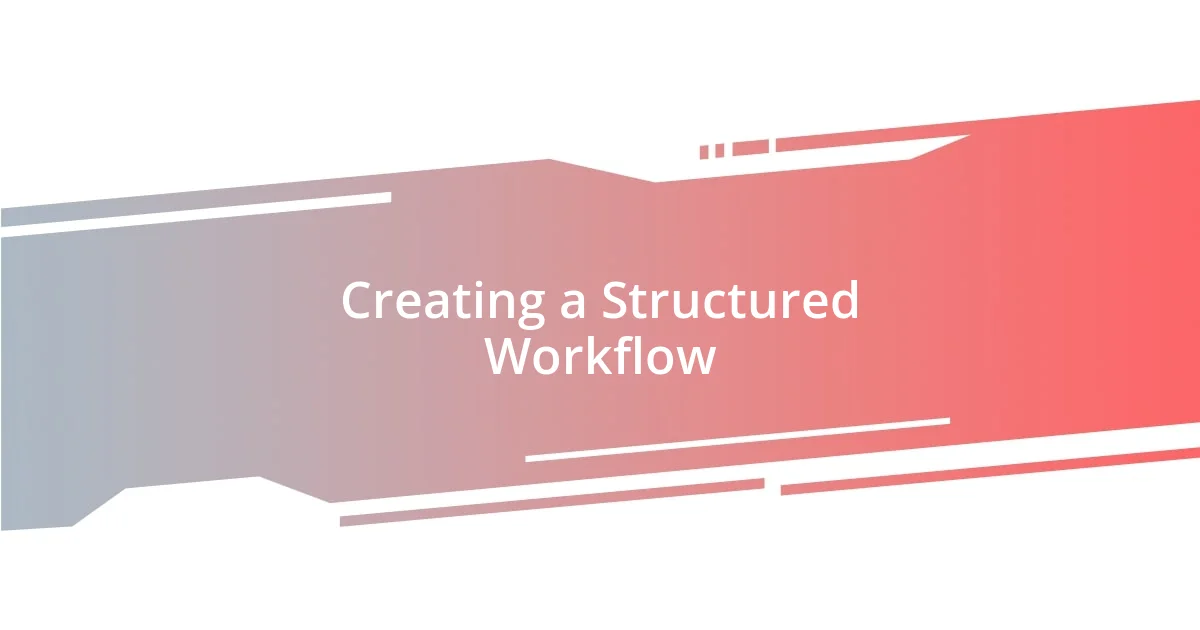
Creating a Structured Workflow
Creating a structured workflow was a pivotal evolution in my mixing process. I began by outlining the steps I wanted to follow for each project, like establishing the order of EQ, compression, and effects. This structure felt like laying down a solid foundation for a house; it brought clarity and direction to the often chaotic mixing stage. Have you ever tried mapping out your workflow? I found that having a clear plan made it much easier to focus on the creative aspects without losing sight of the end goal.
As I refined my workflow, I incorporated templates for different genres. This personalization granted me a starting point that drastically reduced setup time and allowed me to dive right into the mixing. I vividly recall the first time I pulled up my pop mixing template; it was like stepping onto a familiar stage. Knowing where each effect and track would sit helped me concentrate on the nuances, rather than wasting time figuring out where to place things. Isn’t it incredible how a simple template can streamline your process?
I also started to set specific goals for each mixing session. For instance, I would focus on leveling the vocals one day and perfecting the drum sound the next. This approach turned what could have been an overwhelming task into manageable, bite-sized pieces. I still remember the thrill of completing a focused session, knowing I had achieved something meaningful. Have you considered setting goals like this? It’s rewarding to see tangible progress, and I encourage you to give it a try!
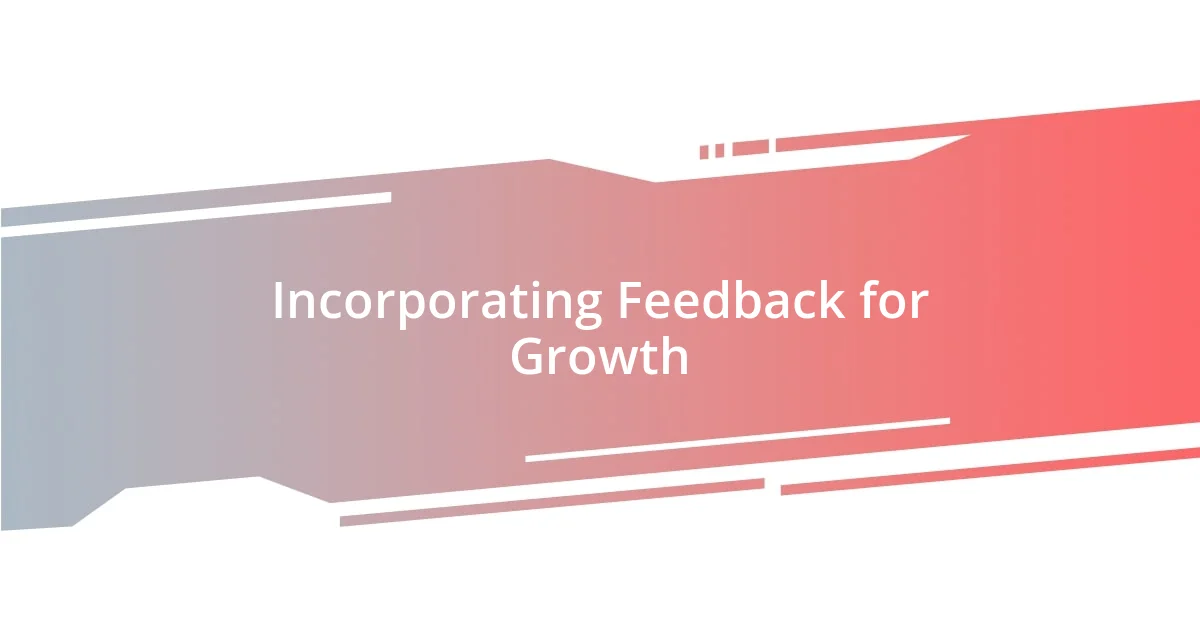
Incorporating Feedback for Growth
Incorporating feedback into my mixing workflow has been a game-changer for my growth. I remember a particularly eye-opening moment when a fellow musician pointed out that my tracks often lacked the punch they craved. Initially, I felt defensive; however, after some reflection, I decided to experiment with his suggestions. Implementing his advice not only made my mixes shine brighter but also made me appreciate the value of an outside perspective. Have you ever received feedback that shifted your approach?
I’ve found that actively seeking feedback can be just as beneficial as receiving it. There was a time when I started sharing my mixes in online communities, and the diverse opinions I received were invaluable. For instance, one member suggested adjusting the reverb on a snare that I thought was perfect. I reluctantly tried their advice, and to my surprise, the mix instantly felt more cohesive. Isn’t it fascinating how collaboration can lead to unexpected improvements?
I also learned to embrace constructive criticism without taking it personally. There was a mix I was proud of, but a mentor pointed out a few rough spots that needed work. At first, it stung, but as I applied their insights, I experienced significant growth in my skills. It reinforced a vital lesson for me: feedback is a tool for evolution, not a judgment of my talent. Reflecting on this, have you ever needed to shift your mindset to embrace feedback? It’s truly empowering when you see it as an opportunity for growth.
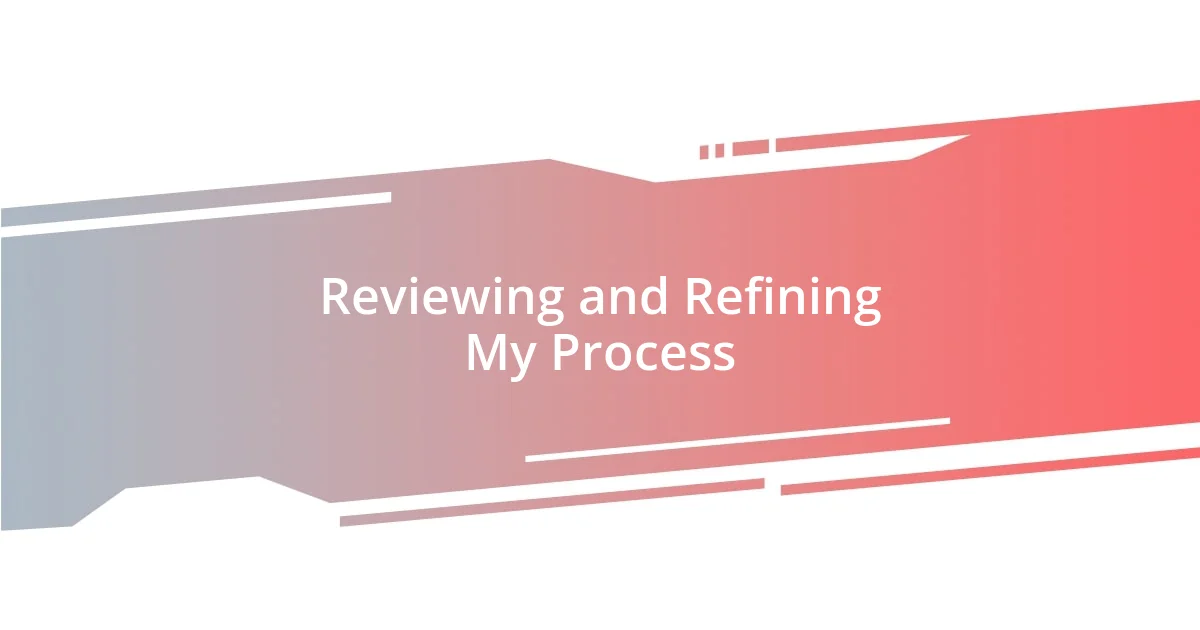
Reviewing and Refining My Process
When reviewing and refining my mixing process, I realized the importance of taking a step back and observing my previous projects. I remember a time when I listened to a mix I had thought was polished, only to hear various elements fighting for attention. It was almost like hearing feedback from a mirror rather than another person. Have you ever experienced that moment of clarity? I found that this self-reflection not only exposed areas for improvement but also sparked creative ideas for future mixes.
Engaging with the music I had worked on also helped me identify recurring mistakes or patterns. For example, I noticed I often overcompressed my bass, making it sound lifeless. It was frustrating to pinpoint this because I’d been proud of my earlier choices, but I knew I had to confront it. The emotional impact was real. It’s never easy to admit our weaknesses, but confronting them directly always leads to growth in my experience. I encourage you to listen closely to your old mixes; what do they reveal about your journey?
Lastly, I adopted a habit of journaling my mixing sessions, where I’d note down what worked, what didn’t, and how I felt during each stage. This practice became a valuable tool for refining my approach. I often found that emotional insights—like feeling lost during a particular session—had direct correlations with technical choices I made. It’s astonishing how our feelings can influence our music! Have you ever considered keeping a mix journal? It can be a game-changer in understanding your evolution as a mixer.

